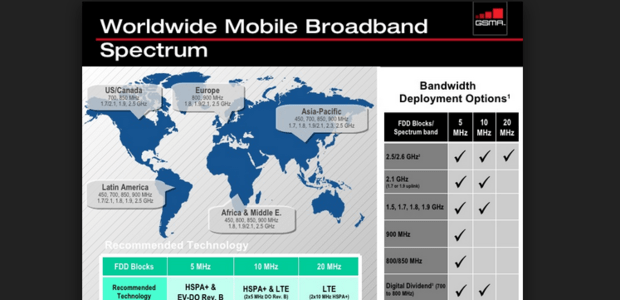advertisement
Adopting best practice when allocating spectrum – a guide to regulators
With WRC-15 approaching in November this year to discuss the African Digital Dividend, there is an enormous opportunity to agree…

With WRC-15 approaching in November this year to discuss the African Digital Dividend, there is an enormous opportunity to agree a harmonised plan that furthers mobile broadband access across Africa and realises the economic benefits that ensue. However, individual countries risk squandering the benefits if their national regulatory bodies do not adopt best practice when awarding the spectrum.
Below, telecoms specialist consultancy Coleago highlight the five key aspects of best practice which regulators will need to adopt if they are to realise the benefits of the Digital Dividend in Africa.
Reduce regulatory uncertainty: Regulators should begin planning the release of the Digital Dividend now and engage early with key stakeholders to allow sufficient time for both the regulator and bidders to plan for a robust award process. Regulators’ planning and discussions, however, should not be limited to just the Digital Dividend but encompass any other spectrum which is to be released in the future as well as the renewal of any existing licences that are set to expire in the coming years.
advertisement
Uncertainty makes investment decisions risky. In the mobile industry, where investment in spectrum and equipment involves very significant amounts of cash which are difficult to reverse once made, this is particularly true. Uncertainty also makes the task of valuing spectrum harder. The greater the perceived risk or uncertainty, the more the value of spectrum is discounted. By providing regulatory certainty over future spectrum in the mobile industry today, regulators will be encouraging investment today, and in the future. Regulators and the public purse will also benefit from reducing regulatory uncertainty; with greater clarity operators will place a higher value on the Digital Dividend which may translate to greater government revenues at auction.
Package spectrum carefully: The way in which spectrum is divided up or packaged into lots and the use of caps or set-asides can have a dramatic impact on how efficiently the spectrum is used and the competitive dynamics of the market. Regulators need to balance the need to provide a wide, contiguous band of spectrum to realise the technical benefits of technologies such as LTE whilst ensuring, possibly through the use of caps, that spectrum does not become too concentrated with one operator, resulting in a loss of competitiveness in the market place.
On the other hand, as our study for the GSMA on the cost of auction distortions revealed, (http://www.gsma.com/spectrum/the-cost-of-spectrum-auction-distortions/) the use of set-asides to encourage new entrants can lead to a significant loss of economic efficiency.
advertisement
Use auctions if appropriate: If the demand for Digital Dividend spectrum is likely to exceed the available supply then regulators should choose to allocate the spectrum through auction. An appropriately designed and competitive auction will result in an efficient allocation of the spectrum which means that the spectrum will be awarded to those operators that will generate the greatest value from it. The other advantage of an auction is that it provides an open and transparent mechanism for awarding spectrum as well as ensuring that the public purse realises a market price for a valuable natural resource.
Ensure effective auction design: The regulator should select an auction design that achieves an efficient allocation of spectrum whilst remaining as simple as possible. Some auction designs, such as 1st price sealed bid auction, may be quick and simple to implement but their use does not guarantee that the spectrum will be allocated to those that value it most highly.
A series of sequential auctions for different bands should also be avoided as a combination of spectrum assets can be more valuable than the sum of the parts. By not auctioning all the bands simultaneously bidders will find it difficult to value the spectrum and may not be incentivised to bid in a sincere manner.
advertisement
Some form of multi-round ascending auction is likely to be most appropriate as this provides bidders with the opportunity to learn about the value of the spectrum from the bids of others. However, designing an auction when multiple policy objectives are to be pursued simultaneously is not a trivial task and regulators are well advised to seek advice from experienced auction designers.
Set reserve prices with care: Reserve prices, the minimum that must be paid to secure spectrum in an auction, can play an important role in auction outcomes. Non-trivial reserve prices deter frivolous bidders and can reduce the benefits from strategic bidding as well as ensuring that the nation receives a reasonable return for a valuable natural resource. However, setting reserve prices too high can result in spectrum being left unsold which represents a far greater economic loss. Reserves need to be set with great care but, if anything, regulators should err on the low side to avoid the risk of unsold spectrum.
The Digital Dividend offers Africa a great opportunity but to fully realise that opportunity regulators will need to ensure they adopt a few key elements of best practice to ensure the opportunity is not squandered.
(Coleago Consulting Ltd is a specialist telecoms strategy consulting firm and advises clients on issues relating to spectrum, regulation and network strategy).